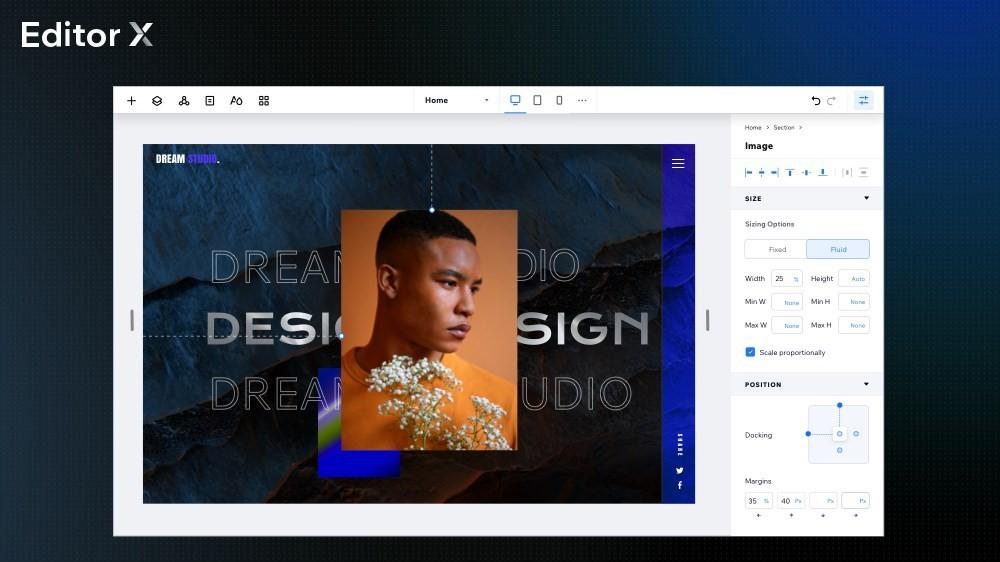

In today’s digitalized world, a tastefully designed website is a must-have. Prospective clients are likely to convert if you have a beautifully designed website as compared to if you had a plain platform.
Fortunately, the current web design landscape allows anyone to build their website. This is due to the endless list of web design tools available. However, each of these comes with different requirements when it comes to skill sets and know-how.
Given this premise, it can be a bit complicated to zero in on the best web design tools to go with. In this article, we talk you through what you need to look for in web design tools and the best web design tools for 2024.
Let’s dive in.
What Should You Look for in Web Designer Tools?
Given the number of web design tools available in the market, it can be difficult to choose which one best fits your needs. So what exactly should you be looking for to help maximize your productivity and time-effectiveness?
Templates
The first is the availability of ready-to-use templates that do not mandate having advanced web designing skills. You want a tool that has adequate templates as this will make it easier to begin and give you an idea of how your website will end up looking.
THE ULTIMATE TEMPLATE CENTER
ClickUp’s template center is packed with helpful templates for design teams, project managers, and for just about any other reason to increase your productivity.
Customization
Another feature you should be on the lookout for is customization. This feature allows your design team to adjust the web design and make it unique to your needs. Customization ensures that your website doesn’t look identical to your competitors. With customization features, it is easier to work on your brand recognition and visual identity.
Integrations
On top of these, you want a web designer tool with system integration. You want a tool that is compatible with your current content management system as it then becomes easier to import new content without compromising your site’s performance.
Options
Additionally, be on the lookout for web design tools that offer a host of options for fonts and graphics. This is because typography is your best bet for creating a visual identity for your website. With plenty of options, it becomes relatively easier for you to express your style and possibly stand out.
Interface
Finally, you want a web design tool with a simple but powerful interface. The latter saves you from a lot of headaches and loopholes thus allowing you to solely focus on the website design instead of spending countless hours figuring out how the tool works.
The 10 Best Web Design Tools to Make 2024 Your Most Creative Year
In the past, web designers had to manually write and build their websites using HTML and CSS code and javascript. Fortunately, this is no longer the case. With the best web design tools, you should easily bring your ideas to life.
Here’s a roundup of the most popular web design resources and tools that you’ll find handy going forward.
1. ClickUp
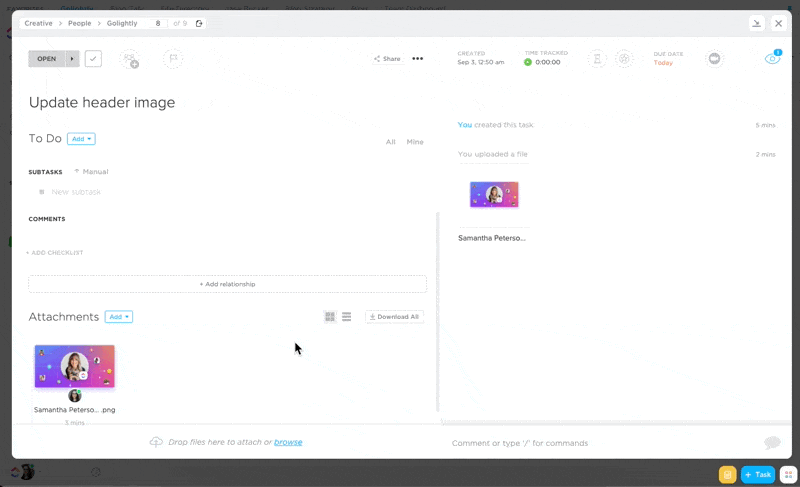
If you are in the market for an all-in-one design management tool that streamlines your design process, aids the sharing of feedback, and maximizes your team’s resources, then ClickUp is the web designer tool for you.
With the platform, you can view all your design projects, track and improve your design team’s efficiency, streamline the design process and integrate all your favorite design tools.
ClickUp uses its robust project management features and combines them with the ultimate project collaboration tools to keep design teams on the same page.
Features:
- Everything view enabling viewers to see everything regardless of where they live in the Hierarchy
- Space, folder, and lists where design teams and departments can be organized
- Customizable tasks along with nested subtasks and checklists for the ultimate project workflow
- Real-time editing for efficient team collaboration
- PDF and image annotation features
- ClickUp Automations to save time by using pre-built automation recipes including 50+ actions, triggers, and conditions
- Mind Maps help you build beautiful visual outlines from a blank canvas or by existing tasks
- Hundreds of templates for teams to use
- Easy integrations with over 1,000 of your favorite tools
Pros:
- ClickUp supports over 1,000+ integrations
- Free training
- 24-hour support
- High-level customization
- Offline Mode allows you to get work done without an internet connection
- ClickUp mobile apps lets you take your work anywhere on the go
Cons:
- High customization can be overwhelming for first-time users
Pricing:
- Free Forever
- Unlimited: $7 per month per user
- Business: $12 per month per user
- Enterprise: Contact for pricing
Ratings and reviews:
- G2: 4.7/5 (2,000+ reviews)
- Capterra: 4.7/5 (2,000+ reviews)
2. Figma
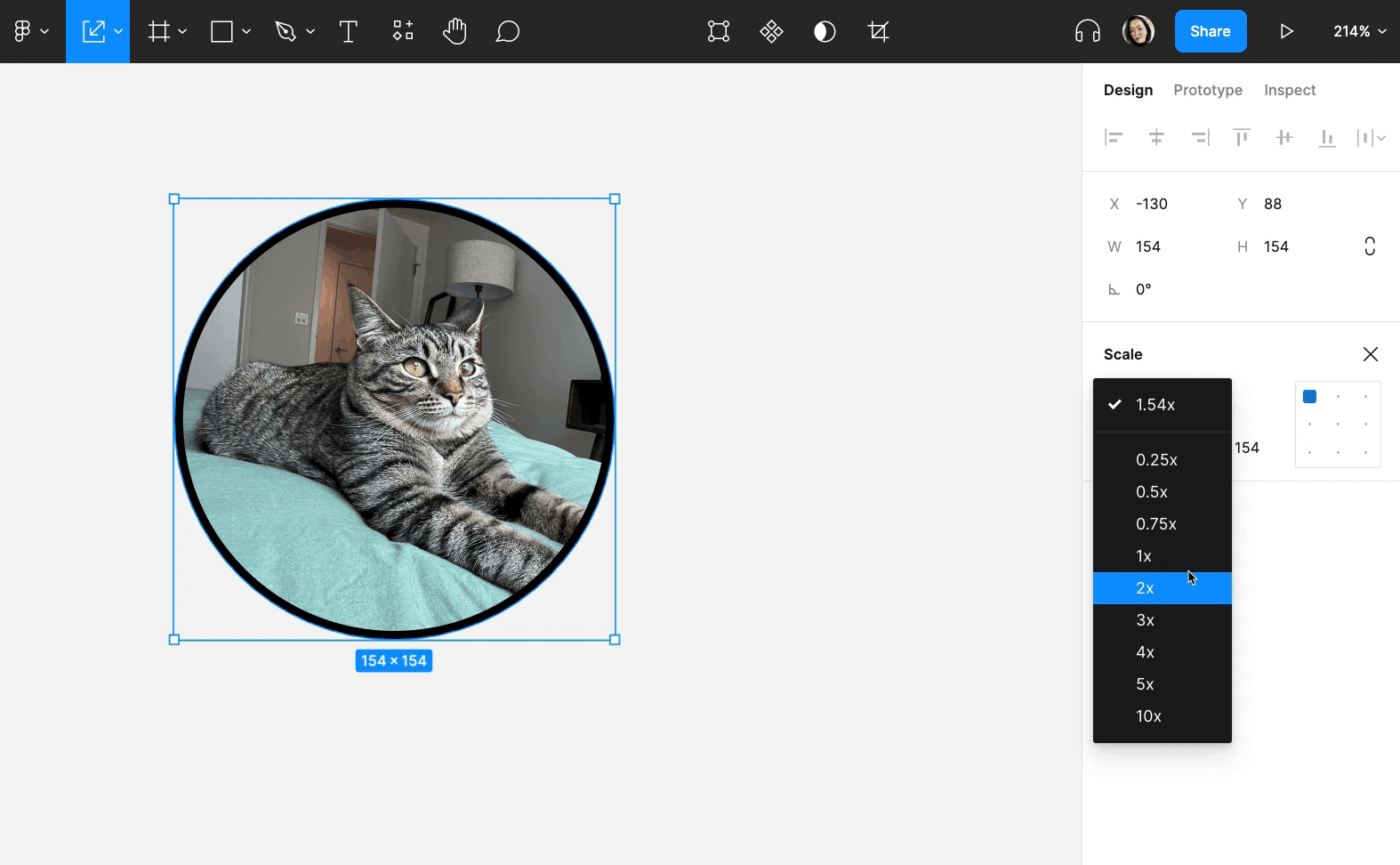
Figma is an all-in-one design platform that connects everyone in the design process so that everyone on the team is better able to deliver products faster. Its web design software is excellent for prototyping, and design systems.
Once signed up on Figma, you have access to the company’s associated tool FIGJAM. The latter acts as an online whiteboarding tool from where design teams can collaborate and map out design processes.
In hindsight, it would appear that Figma was built for the future of the web.
Features:
- API
- Animation
- CAD Tools
- Collaboration Tools
- Commenting/Notes
- Data Import/Export
- Design Management
- Design Templates
- Single Sign On
- Image Editing
- Performance Testing
- Usability Testing
Pros:
- Endless capabilities
- Figma can be used to create app prototypes and mockups for the product team
- Lightweight
- Lots of widgets that you can use to run memorable workshops
- Support for a collaborative design environment
Cons:
- Steep learning curve
- No mobile application
Pricing:
- Free for up to 2 editors and 3 projects
- Professional: $12 per editor/month (annual billing) and $15 per editor/month (monthly billing)
- Organization: $45 per editor/month (annual billing)
Ratings and reviews:
- G2: 4.7/5 (729 reviews)
- Capterra: 4.7/5 (549 reviews)
3. Canva
Canva offers web designers an unparalleled variety of graphic categories and thousands of professionally made templates that should get even an amateur started. And with the Canva Website Builder, it’s a breeze to create one-page websites for events, portfolios, retail sites, and more.
The best part is it’s free to use.
Additionally, the online platform is hosted in the cloud and can be accessed from any location using any device with an internet connection. You can use Canva either on a web browser or as a downloadable app for Mac, PC, Chromebook, iOS, or Android.
If you are looking for a web design tool for quick image, and video editing, or making a one-page site, then Canva is the tool for you. If you desire audience engagement on the site you’ve built, then you can also deploy Canva Insights which provides you with basic analytics.
Features:
- Library of built-in templates for teams
- Responsive design
- Real-time collaboration
- One-pager templates for custom websites
- Analytics with Canva Pro
Pros:
- Downloading the built project is fast and reliable
- Users can easily select a template and start editing without any delay
- No design background needed
- Excellent learning resources for its design tool and general design systems
- Impressive suite of new tools like the Canva Website Builder
- Intuitive interface makes it easier for the amateur designers
- User-friendly web design software experience
Cons:
- The free version has watermarks prohibiting users from downloading or further editing designs
- Downloading multiple files automatically compresses them into a zip file
- Occasional bugs as Canva is a full web application
Pricing:
- Free
- Canva Pro: $12.99 per month or $119.99 per year for one user
- Canva for Team: $14.99 per month or $149.90 annually for the first five users
Ratings and reviews:
- G2: 4.7/5 (3,771 reviews)
- Capterra: 4.7/5 10,833 reviews)
Learn about more Canva alternatives!
4. WordPress
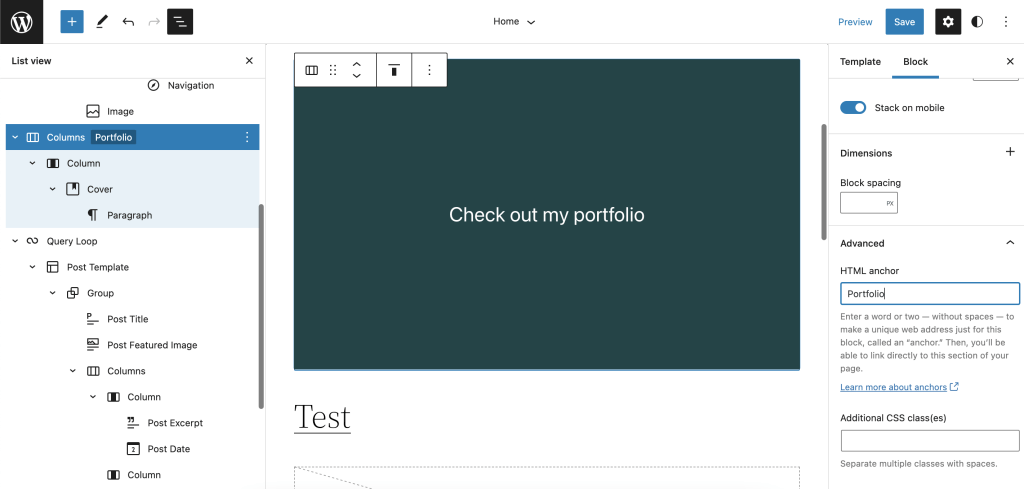
WordPress has earned quite the reputation as the go-to solution for web design software by powering almost half of the entire internet. Users have the option of either WordPress.org or WordPress.com which are both based on the same core web design software tools with only a few key differences.
The former is a self-hosted platform meaning that you’d be hosting your website using a hosting provider service. On the other hand, WordPress.com is hosted by Automattic.
In hindsight, WordPress stands out as the best free blog software for beginners.
Features:
- Augmented reality
- Custom design
- Voice search
- Accessibility mode for widgets
- Custom content types
- Integrated news and blog posting
- Managed website security
- Support for PHP 8
- Dark mode
Pros:
- Relatively cheap
- Beginner-friendly and easy to get started
- Websites built with WordPress work well on different devices
- Highly modular with thousands of plugins and themes
- Users can build almost any type of website
- WordPress is designed to be responsive right out of the box
- SEO-friendly by default
Cons:
- Web design software update issues
- High cost of customization
- Possible security vulnerabilities
- Optimizing site speed can be challenging
Pricing:
Pricing for WordPress.org will vary from that of WordPress.com. WordPress.org is free. However, there are additional costs you’d have to incur including that of purchasing different hosting plans for its design tools.
WordPress.com has five pricing plans.
- Free
- Personal: $4 per month, billed annually
- Premium: $8 per month, billed annually
- Business: $25 per month, billed annually
Ratings and reviews:
- G2: 4.4/5 (2387 reviews)
- Capterra: 4.6/5 (1,414 reviews)
5. Adobe
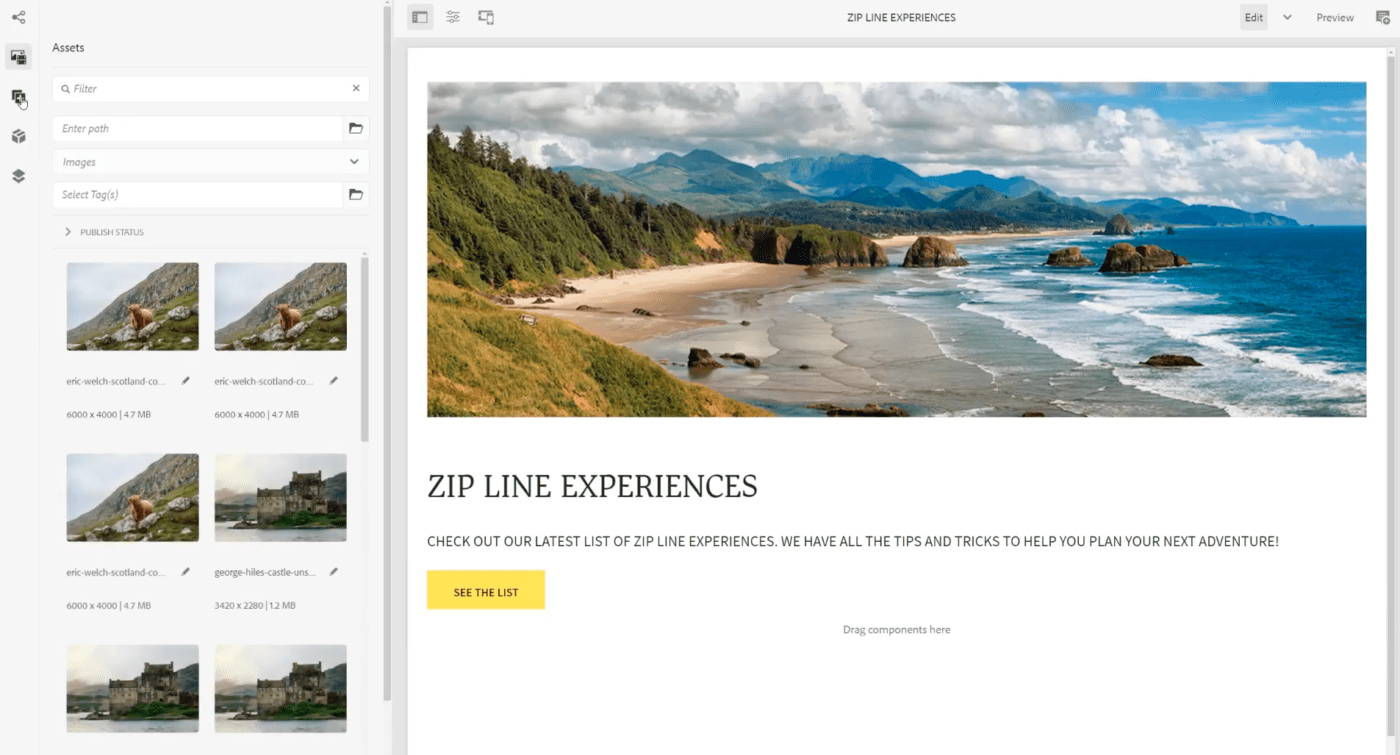
While relatively new in the web design software landscape, Adobe has become a natural choice for graphic and web designers. This web design mockup and the prototyping tool allow designers to ideate and collaborate on different projects.
With Adobe Photoshop and Adobe Illustrator in its suite of web design software tools, its popularity among designers translates to numerous tutorials and resources on the web that’ll get you started. This is especially helpful when you’re looking for Adobe Photoshop help with the user interface design tool.
The responsive web development and design tool makes it simple to build beautiful custom websites for any browser or device. The design tool also helps those wanting to build responsive web designs.
Features:
- Collaboration
- Wireframing design system
- Interactive proptypes for the web design process
- Redesigned, modern user interface that’s better streamlined and clutter-free
- Access to code hints
- Multi-monitor support for Windows
- Visual aids to reduce errors and speed up site development
- Git support
Pros:
- Great reputation as an end-to-end UX design tools
- Seamless integration with other tools
- Good performance even with large files
Cons:
- Adobe only has a free trial option for its web development tools
- No real-time web design collaboration capabilities
Pricing:
- Free: 1 user per month
- Adobe Dreamweaver Single App: $20.99/month
- Business:$35.99/month per license
- Creative Cloud All Apps: $54.99/month
Ratings and reviews:
- G2: 4.6/5 (34,327 reviews)
- Capterra: 4.8/5 (1,733 reviews)
6. Wix
Wix is a website developer’s tool that allows you to design, manage and grow your online presence based on your needs and specifications. As a web developer, you have three choices for website building: Wix Editor, Wix Artificial Design Intelligence (ADI), and Velo by Wix.
With Wix Editor, you get a user-friendly website builder with a drag-and-drop capability and a host of customizable templates that perfectly suit beginners in web design.
On the other hand, ADI is an autonomous website builder that helps develop an entire website after users submit their user preferences. But this website builder is key for WYSIWYG with drag-and-drop features.
Finally, with Velo by Wix, users get an open-source platform on which they can create sophisticated web development applications. This platform is ideal for independent web developers looking to create a custom website user experience.
If you need an intuitive website builder and a handy tool with an array of affordable pricing plans, then Wix is the platform for you. You have the choice of over 500 pre-designed customizable templates.
Features:
- Integrated online payments
- Multichannel sales ideal for eCommerce
- SEO-friendly infrastructure and tools for easily creating websites
- Built-in accessibility tools
- Free banding tools
- Analytics and reports with the design tool
Pros:
- Wix is effortless to use requiring no web development or coding history
- Affordable pricing plan with a free tools program
- Wix websites have the fastest loading times in the ecosystem making this design tool a top choice to create responsive websites
- Wix’s SEO Wizard provides helpful advice for optimizing your website
- Simple drag-and-drop editor for amateur or seasoned web designers
Cons:
- Limited customizability is available as users have no access to the website’s code
- Limited functionality thus making Wix unfavorable for users running a blog or online store
- Users can’t switch themes without losing their content first
Pricing:
- Combo: $18 a month
- Unlimited: $23 a month
- Pro: $28 a month
- VIP: $47 a month
Wix also offers a few Business and eCommerce plans. These include:
- Business Basics: $28 a month
- Business Unlimited: $33 a month
- Business VIP: $56 a month
- Enterprise: $500 a month
Ratings and reviews:
- G2: 4.4/5 (9.159 reviews)
- Capterra: 4.4/5 (1,545 reviews)
Check out these Wix alternatives!
7. Marvel
If you are looking for web design software tools that offer rapid prototyping, testing, and delivery to market, then Marvel is the tool for you. Of the website builders on the list, this tool comes with an intuitive design and prototyping functionality that makes wireframing, design, and prototyping relatively fast.
Design teams can instantly generate design specs and connect integrations that power their design workflow.
With no learning curve and no web design software requirement, Marvel is an excellent option for amateurs starting. Users have, at their disposal an accessible library of templates and assets that eliminate complexity from the design process.
Marvel makes it significantly easier to transform a design mockup into interactive, online prototypes without writing a single line of code.
Features:
- Customizable and easy-to-use templates across the design tool
- Customizable branding templates for different web elements
- Premium predefined icons that can be used in your web design
- Intext fonts can be included within images
Pros:
- Workflow between screenshots
- Clean and simple user interface with auto layout web elements
- Users can send a link to the project to the clients for easy access to the prototypes
- Most features are free making it especially useful to new designers, students, and nonprofits
- Web-based so users can access the app anywhere with an internet connection
Cons:
- Challenges creating groups within the prototype
- Animation on Marvel is not as fluid or as smooth as on other platforms
- Web design software has no offline options
- No annotation options
- Limited animation functionalities for web design
Pricing:
The web development tool offers 5 options with the chance to start a free trial as well.
- Free (1 user, 2 active projects):$0
- Pro (1 user, unlimited projects): $12 per month
- Team (3 users, unlimited projects): $42 per month
- Company (6 users, unlimited projects): $84 per month
- Enterprise (unlimited users + projects): Contact for a quote
Ratings and reviews:
- G2: 4.5/5 (1,168 reviews)
- Capterra: 4.6/5 (83 reviews)
8. Trello

If you are looking for a collaborative tool for your web design tool, then Trello is the tool for you. The platform makes it relatively easy and manageable to draft emails, and spreadsheets and bring together the entire team with drag-and-drop functions to move tasks around.
This Kanban-style project management software allows design team leaders to track how each member of the design team is doing. The digital collaboration tool helps you sustain productivity and foster collaboration even in a distributed work environment.
It could be used for web design purposes, but Trello works best as a task management solution.
Features:
- Card covers that make collaboration colorful
- A host of keyboard shortcuts that could be a productivity savior
- Advanced checklists that allow a clear map out of all moving parts
- Calendar Power-Up to see all assigned checklist items
- Butler automations to help build better workflows
- Dark mode in the Trello app for iOS and Android
Pros:
- Intuitive interface
- The free plan has a lot of capabilities
- Drag-and-drop editor with its cards
- Users have both mobile and computer access
- Users can easily create boards with ideas for design thinking
- Multiple Swimlanes can be created to serve multiple ticket purposes
Cons:
- Many features require add-ons
- There is a size limit for attachable files which might be limiting in most instances
- Integration with MS Teams and Google Chat can be better
- Not your typical web design software but more task management solution
Pricing:
Trello has four pricing structures with a free trial option on its paid plans.
- Free
- Standard: $5 per user per month
- Premium: $10 per user per month
- Enterprise: $17.50 per user per month starting for 250 users billed annually
Ratings and reviews:
- G2: 4.4/5 12,993 reviews)
- Capterra: 4.5/5 (22,289 reviews)
Check out these Trello alternatives!
9. Webflow
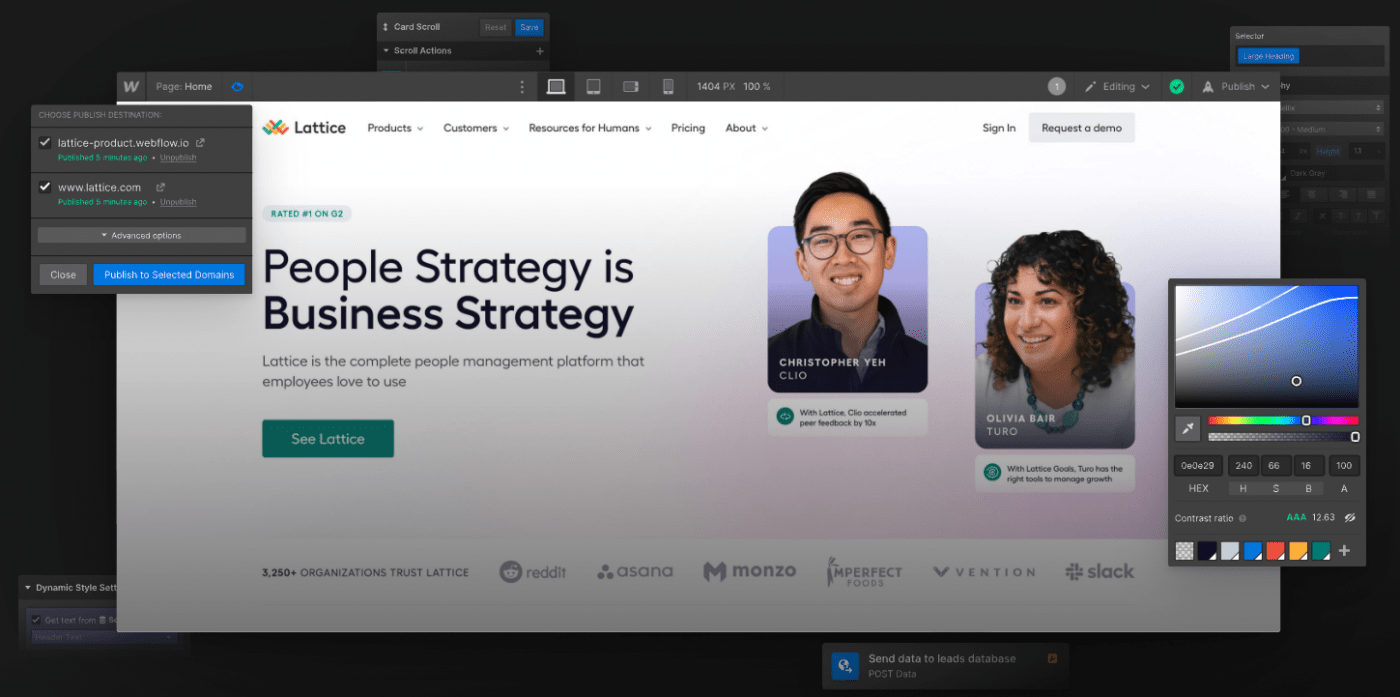
Webflow is a new, popular web-building platform that features an online visual editor platform through which you can design, build and launch websites. The visual canvas allows you to control CSS3, HTML5, and JavaScript and translate semantic code into customized sites for the ultimate web design process.
It also allows you to use unstyled HTML elements to gain control. Further, users can leverage pre-built pieces to design complex elements including background videos and elements, among others.
Features:
- Scroll-based animation
- Multi-step animation
- SEO controls
- Activity dashboard
- Calendar management
- Campaign management
- Auto update
- Activity tracking
Pros:
- Web designers can link movement and animation to the cursor position to grab user attention
- Collaboration is relatively straightforward as multiple designers can be invited to work on the same website at a time
- Websites can be made more interactive by leveraging display panels, modals, and other hidden elements
- Over 20 prebuilt animations and interactions are available making the addition of features instantaneous
Cons:
- Images can only be compressed manually which can be time-consuming
- The CMS limit is still quite low on some of the plans
- Steep learning curve for a website builder
Pricing:
- Basic: $12 per month
- CMS: $16 per month
- Business: $36 per month
- Enterprise: Quote-based plan
Ratings and reviews:
- G2: 4.4/5 (401 reviews)
- Capterra: 4.6/4 (193 reviews)
10. Designmodo
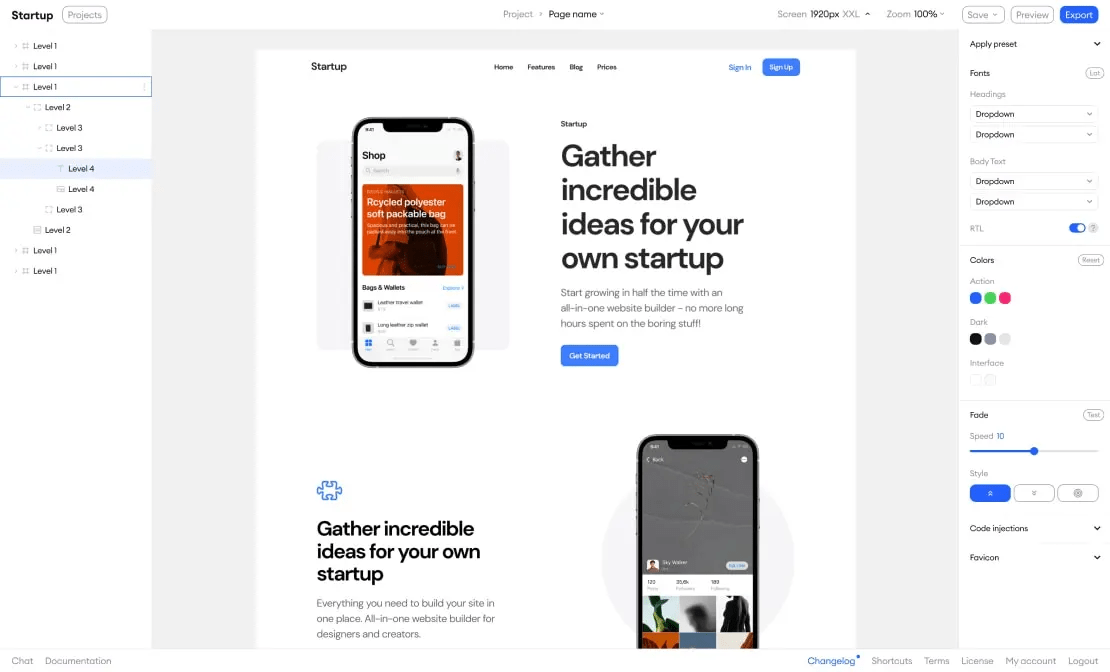
Designmodo is an all-in-one web design software solution where users can create websites and newsletters. This tool works best for users looking for a tool to help create static web pages, drag-and-drop websites, or email templates.
Designmodo offers web designers two website builders: Slides and Startup. Using these two, builders can custom-create two websites and launch them via a host. This web design software uses a drag-and-drop feature, which is very simple while also very customizable. The design tool makes the entire process relatively hassle-free.
Features:
- 100 module components for paid customers
- Mobile friendly design
- Job board
- Newsletter templates
Pros:
- Designmodo’s documentation is well-detailed
- The drag-and-drop for content modules is well-designed
- Clean, snappy interface across the design tool
- Simple project hierarchy
- Zero learning curve for web designers
Cons:
- Limited template options for web designers
- Designmodo doesn’t offer any free trial
- Modules customization should go beyond the available depth
Pricing:
- Business Plan: $18/month
- Agency Plan: $29/month
Ratings and reviews:
- G2: 4.2/5 (18 reviews)
- Capterra: 3.4/5 (10 reviews)
Manage Your Web Design Projects All in One Place
Collaboration is key for web design teams, which means there are several people working on similar tasks at the same time. Get your project in order by using ClickUp’s suite of project management, productivity, and web design tools to avoid bottlenecks and drive efficiency.
Want to see how your web design team would work in ClickUp? Invite your team members and get started for free!





